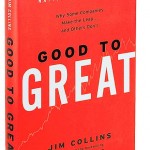
To Sell Is Human: Don’t Burn A Gatekeeper
Making a Connection with To Sell is Human: The Burning of a Gatekeeper
I hung up on Ken (name changed for privacy) for the last time. At 3 am I finally decided that we weren’t going to get paid for the show my band just played. Ken was a promoter for a good venue in Haleiwa on the North Shore of Oahu. He had caught our set a few weeks prior and made us a good offer to play a future show. He said he’d pay us prior to our performance and guaranteed us a decent amount – that’s uncommon. Before the night was over, Ken had disappeared from the venue where he was not only a promoter but a regular waiter. During my first phone call with Ken, when I started to wonder where he had gone, he said he had to go and get extra money from his house because he came up short with what he had promised...












